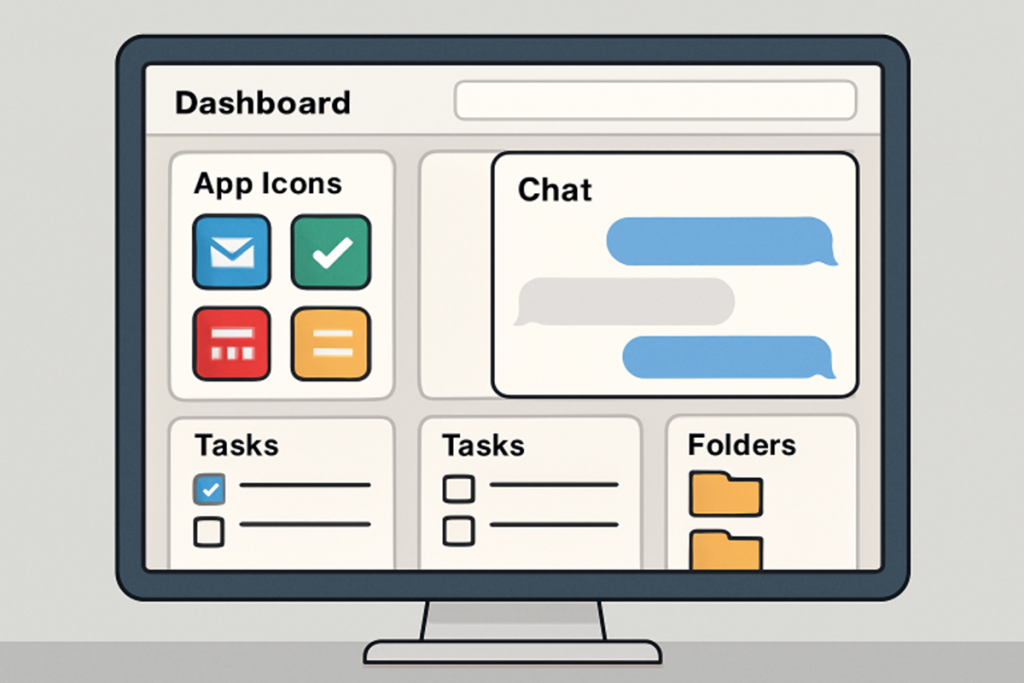Post Preview
Key Takeaways:
- Digital workspaces are revolutionizing how we manage tasks and collaborate online.
- Customization and integration of tools enhance efficiency and user experience.
- Understanding the environmental impact of digital habits is becoming increasingly important.
The Rise of Digital Workspaces
In the era of hybrid and remote work, the digital workspace has emerged as a cornerstone of productivity. No longer confined to the physical boundaries of a traditional office, workers are relying on integrated online environments designed to streamline task management, optimize communication, and drive results. With the growing need for seamless collaboration, these platforms are not only transforming the way teams operate but also empowering individuals to maximize their unique working styles. Professionals looking to stay ahead can explore evolving solutions, such as the Shift browser on LinkedIn, to understand how new technologies are shaping the digital landscape.
Digital workspaces consolidate the essential tools people use every day—project management apps, messaging services, cloud storage, and more—into a single intuitive dashboard. This unified approach addresses the longstanding fragmentation of tech stacks that once led to lost time and decreased productivity. By simplifying access to key apps and ensuring critical information is always within reach, these platforms are raising the bar for effective digital collaboration.
Customization: Tailoring Workspaces to Individual Needs
One remarkable hallmark of the modern digital workspace is its high degree of customizability. Individual contributors and teams no longer need to settle for a one-size-fits-all experience. Instead, users can fine-tune their environment: dragging and dropping widgets, customizing dashboards, and creating project-specific spaces. Such flexibility supports diverse working preferences—whether you prefer a minimal setup or a fully-featured command center.
Personalization directly correlates with improved focus and efficiency. Employees are empowered to curate tools and workflows that best match their roles or project needs, leading to enhanced satisfaction and better outcomes. Businesses are now leveraging customization options as a key selling point to recruit and retain talented remote workers, recognizing the direct impact of well-configured digital workspaces on workplace wellness and productivity.
Integration: Bringing All Tools Under One Roof
The integration of disparate productivity tools is perhaps one of the most transformative aspects of digital workspaces. Gone are the days of toggling between apps and windows, struggling to find critical files or messages. Modern platforms offer seamless connections to productivity suites, collaboration tools, and cloud services, making all resources accessible through a single interface.
Choosing platforms that offer robust integrations ensures teams can keep pace with fast-moving projects—reducing administrative burdens and empowering people to focus on impactful work. Whether connecting a calendar, email, customer relationship management tools, or industry-specific software, these integrations create a digitally unified environment that supports collaboration on a global scale.

Environmental Considerations in Digital Habits
As our digital footprints expand, so does the need for companies and individuals to be aware of the environmental implications of their online activities. Many digital workspace providers are taking concrete steps to address this issue, from optimizing their own data infrastructure to launching user-facing tools that help measure and offset online carbon footprints. For example, browsing footprint calculators and automatic carbon offsetting solutions can help users and organizations track, understand, and mitigate their impact. These initiatives are part of a growing movement toward sustainability in tech, reflecting a broader shift in consumer and corporate values.
Enhancing Privacy and Security
Privacy and security remain pressing concerns in an increasingly digital world. Digital workspaces are responding by introducing features like incognito browsing modes, encrypted messaging, and robust access controls. Such protections are designed to keep sensitive company and personal data safe, allowing users to work confidently without risking unauthorized access or data leaks.
Proactive privacy features build trust among users and stakeholders—a critical asset in remote and cross-border work environments. As teams exchange confidential information and manage distributed operations, investing in secure digital infrastructure and up-to-date protocols is a must for any forward-thinking organization.
Staying Updated: Regular Updates and Support
The digital landscape is in constant flux. Reliable digital workspaces distinguish themselves by offering consistent updates, rolling out new features, fixing bugs, and ensuring optimal performance. According to TechTarget, regular software updates are critical not only for performance improvements but also for security enhancements and compatibility with emerging technologies. Flexible support channels, comprehensive knowledge bases, and responsive customer service help users troubleshoot emerging challenges and adapt to evolving work requirements quickly. Organizations that prioritize these factors position themselves for success, as team members are better able to adapt, innovate, and maintain productivity, regardless of external shifts and technological advancements.
Conclusion
Digital workspaces represent a paradigm shift in how modern organizations and individuals approach productivity. By prioritizing customization, seamless integration, environmental responsibility, and robust privacy, these platforms are helping teams navigate the challenges and possibilities of today’s online working world. Adopting a digital-first mindset means choosing tools that foster efficiency, adaptability, and sustainability—essentials for thriving in an ever-evolving digital economy.
